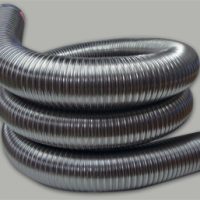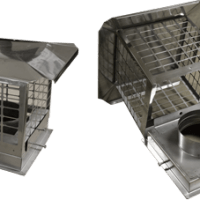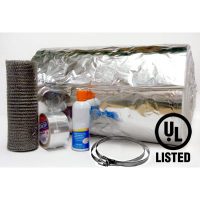Now is not too soon to be thinking about this years home heating oil costs. If your home uses heating or fuel oil as a primary heating energy source, you will no doubt be struggling with the huge increases in costs that are heading your way. Heating oil, like gasoline, are tied very closely together in price and we all know what the price of gas has done over the last few years.
The absolute best way to help insulate yourself from fnancial ruin due to rediculously high home heating bills this winter is to insulate your home instead. Imagine leaving a window open all winter long. The heat loss, cold drafts, and wasted energy would drive everyone crazy. If however you add up all the places where drafts and energy leaks occur in your home, it would probably be equal to leaving a window open all winter long. The reason why you don’t feel it so much is that instead of a big hole like an open window, you have a large number of very small leaks. This is analagous to having every faucent in your home dripping in relation to simply running the bathtub all the time. The result is the same. Water loss.
So back to the issue of energy and heat loss leakage from your home. Often overlooked, there are several major potential areas where you should check for heated air loss.
1. Fireplaces. These are a chimney or hole to the outside. Check and see if the damper is tight. Use glass window fireplace covers. And if you decide not to use the fireplace, consider getting some 2 inch rigid foam insulation from the hardware store and making a plug to close off the fireplace even better. To make a fireplace plug, measure the fireplace opening below the damper, cut a piece of foam insulation to fit and wedge it into place. A good safety idea is to attach a short piece of rope to the plug to not only help remove it when you are ready to use the fireplace but also as a safety device to make certain it’s remembered before the fireplcae is used. Make certain the short piece of rope or even ribbon is long enough to easily be seen. Mine touches the fireplace logs and acts as a reminder the plug is in place.
2. Air leaks are the largest source of heating and cooling loss in the home. Air leaks occur through the small cracks around doors, windows, pipes, and outside electrical outlets. A good way to seal the electric plugs is to pick up some plug gaskets and install on all outside electrica outlets. These are simply a thin rubber about the shape of the outlet cover that fits over the plug and seals around the outlet and the cover.
3. Doors are a special problem because you can’t simply seal it up. They need to opena and close regularly and seal. Weatherstripping around the perimeter of the door is a good way to seal out the leaks around ouside doors. Another suggestion is to take fabric material, cut 2 pieces about 3 inches wide and make it 6 inches longer than your door opening. So if the door is 46 inches, you want 2 pieces of fabric 3 inches by 42 inches. Sew the fabric together along the long sides and one small side. This will give you a pocket similar to a pillow case. Next turn the pocket inside out so the finished seams look good, and fill with any small material. Any cooking beans, rice, popcorn, even sand is a good material. You now have a bottom door seal that can be placed against the door sill at the bottom, keeping the cold air out but can also be removed during the day. This is also a great idea for rooms that have been closed off for the winter. Have a guest room that isn’t being heated? Make another bottom door seal and save energy. You can even purchase similar door seals from many stores because they’re so popular and every efficient.
While there’s nothing we can do about the high enrgy prices next winter, by being prepared, the bills can be dramatically lowered. The key is to keep the leaks down and the warmth inside your home.
About the Author: Abigail Franks writes on many subjects having to do with home, family, and health. For more information on saving money on your home heating costs visit the site at http://www.home-heating-oil.fixituptoday.com






